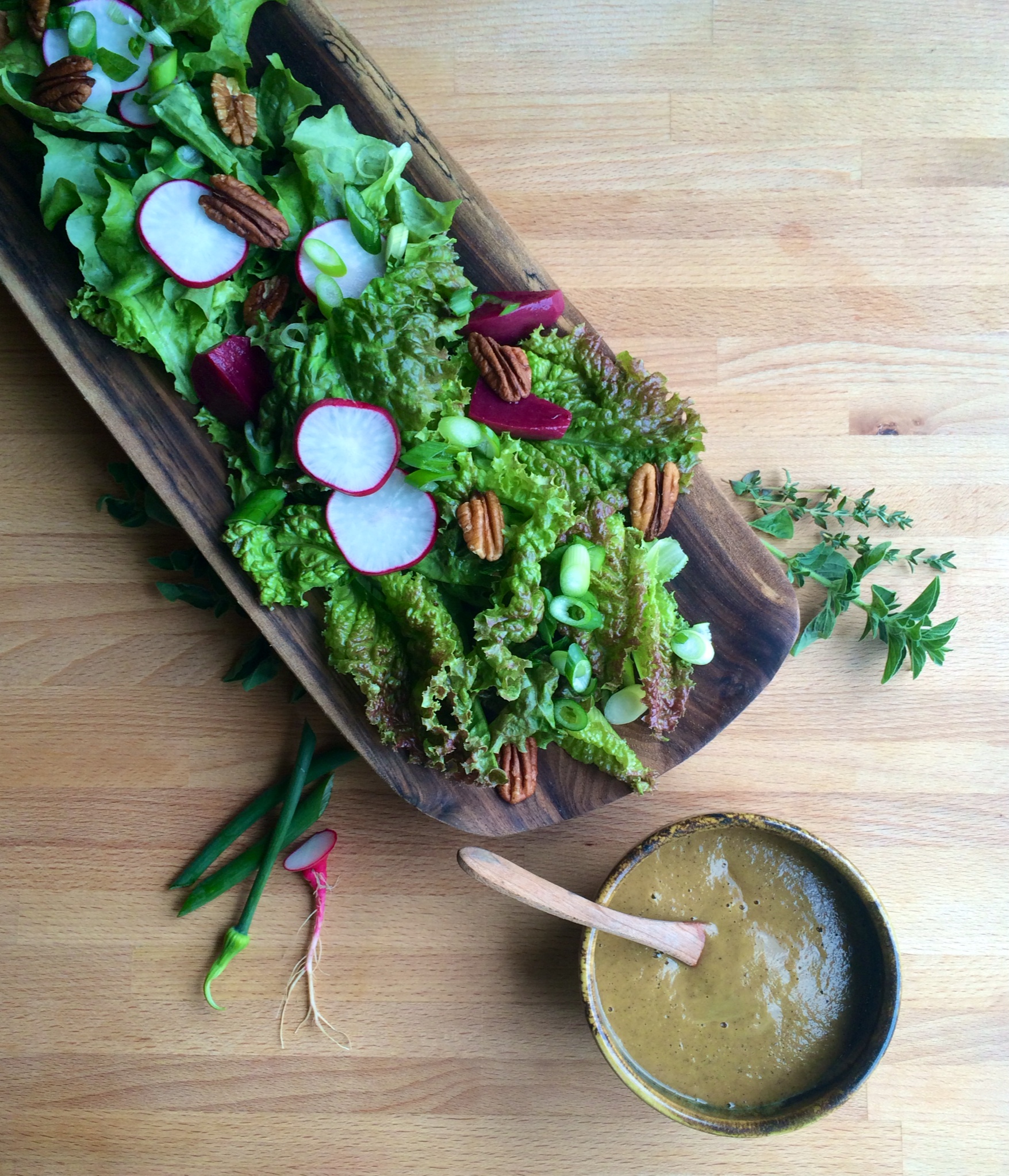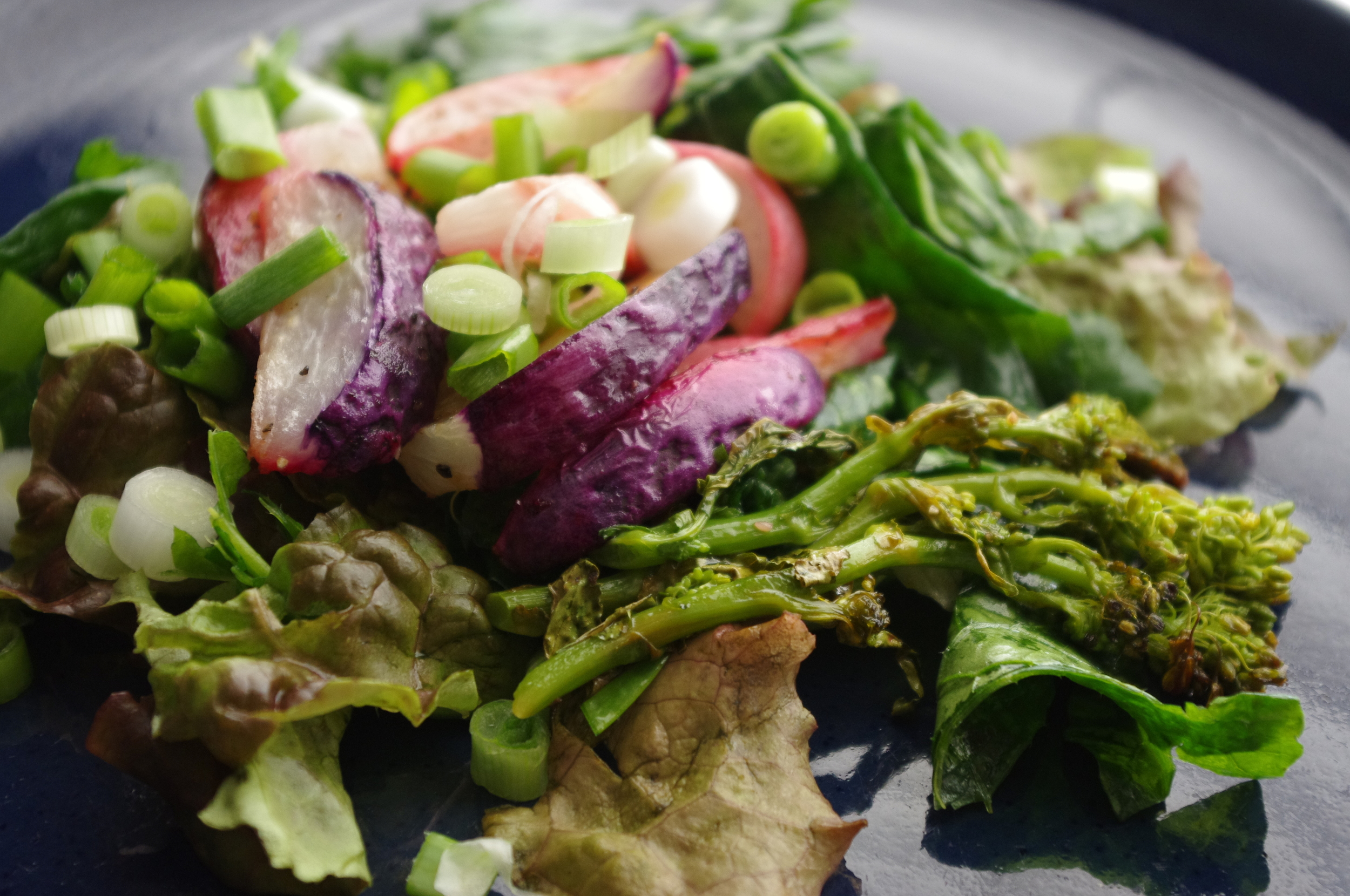One of the many reasons why we choose to farm organically is because we want to protect the natural ecosystems of life. Much of what we see in terms of "pests" that nibble holes in the broad leafy greens, are only a tiny portion of living organisms that depend on vegetables for life and health. When pesticides are used, It's not just the beetles and caterpillars that are eradicated; even the organisms that are healthy and necessary for digestion are disrupted. Bacteria are part of the life cycle, and for humans and other animals they are necessary in the process of digestion and absorption of necessary nutrients. Lactobacilli is the main naturally-occurring pro-biotic that lives on fresh fruits and vegetables. When the vegetables are allowed to ferment in an anaerobic environment, the lactobacilli multiply. This is good news for everyone, but especially for anyone who might have difficulty digesting certain foods. Other fermented foods such as sour dough bread, yogurt, and cheese are already common in western diets for their taste as well as their nutritional properties.
Although pro-biotics are available in pill form at pharmacies, making your own is not only cheaper, it's delicious as well! This season's CSA shares are full of fantastic fermenters. Cabbages, radishes, spring onions, and kohlrabi are excellent as sour kraut or kimchi. Give it a try. And if you are looking for more information about fermenting, contact our local Slow Food Chapter, or read one of the many books about fermenting available online or at your local library.

Basic Kimchi
(Adapted from Wild Fermentation by Sandor Ellix Katz)
Ingredients:
(To make 1 quart of Kimchi)
Sea salt (not iodized)
1 lb Napa cabbage, pak choi, or arrowhead cabbage (or a mixture of the three)
1 Daikon radish or a few easter egg radishes
1-2 Fennel bulbs
3-4 Spring onions
4-6 Cloves of garlic
3 Tbs fresh ginger root
3-4 Hot chilies (fresh or dried)
Method:
To make the brine, fill a quart jar with filtered water or spring water, then add 4 Tbs sea salt. Cover and shake until dissolved.
Coarsely chop the cabbage or pac choi, spring onions, and fennel. Grate or julienne the radishes. Place in a mixing bowl and cover with the quart of brine. Cover with a plate or other weight to keep the vegetables submerged in the brine. Let the vegetables soak for about 2 hours.
Place the garlic, chilies and ginger in a food processor or blender and puree into a paste. You may need to add a little water or brine to make the paste.
When the cabbage mixture is decidedly salty to taste, drain off the brine into a bowl or jug (you may need some later). Place the cabbage into a bowl and massage the garlic-ginger paste into the cabbage. Always make sure to use clean utensils and hands. (Sterilizing with anti-bacterial or chemical sanitizers are not necessary, but you want to make sure there are more good bacteria present than bad ones that will encourage mold growth. Soap and water for hands and utensils is perfect). Stuff the cabbage mixture into a clean quart jar, packing in as tightly as possible and forcing the brine to rise. Bruising the vegetables until they release brine encourages fermentation and removes air pockets. The lactobacilli bacteria will populate in an anaerobic environment (no air), whereas molds will grow in the presence of oxygen. However, you need to make sure to Leave about 1 inch of space in the top of the jar because the fermentation process will release gasses and cause the kimchi to swell in the jar.
There are several methods for keeping the kimchi submerged in the brine and discouraging mold growth. For the sake of simplicity, however, I'm going to suggest keeping the lid on the jar (not too tight!). Without a weight to hold the vegetables under the brine, you will need to open the jar and press the vegetables down into the brine once a day for a week. Katz says, "If you think you can remember to check the kimchi every day, you can jus use your (clean!) fingers to push the vegetables back under the brine. I myself like the tactile involvement of this method, and I especially enjoy tasting the kimchi by licking my fingers after I do this. Either way, cover the jar to keep out dust and flies." It takes about a week for the kimchi to ferment to a point of ripeness, but you can taste each day and decide how you like it best. I won't hurt to let it go longer if you prefer. Leave it in your kitchen or on a shelf (not in direct sunlight) at room temperature, then refrigerate for long storage once it tastes perfect. It will continue to ferment very slowly in the refrigerator, but can be tasty for months of stored properly.
Kimchi is a very versitile salad or condiment, but my favorite way to enjoy this tasty pro-biotic-filled food is with scrambled eggs and sauteed greens. It's a fantastically nutritious way to start the day.











